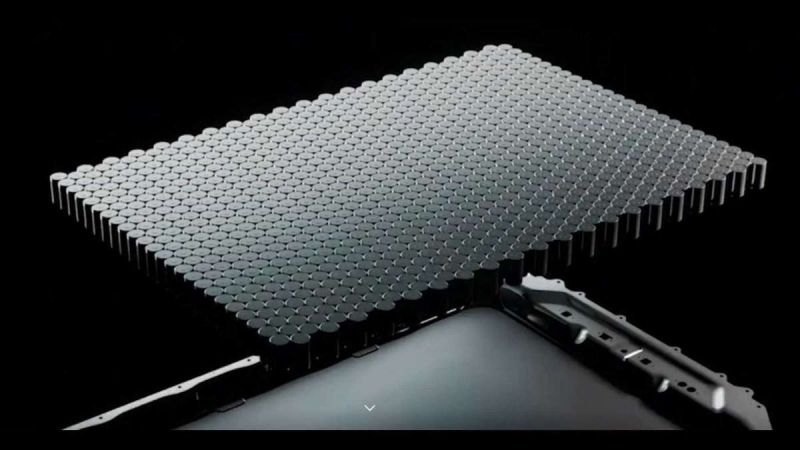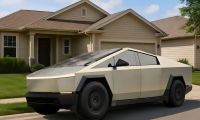A team of scientists from the Skolkovo Institute of Science and Technology in Moscow have basically found a way to tune the micro-structures of battery electrodes to improve their energy density. Their work points the way towards achieving electric vehicles with greater range for each charging session; the continuation of their work could greatly increase the performance of currently existing lithium-ion batteries.
The main topic of this research focuses on the cathode: in many lithium-ion batteries, this electrode is made of layered transition metal oxides, known as NCM, rich in nickel, accompanied by cobalt and manganese. The geometry of the architecture of these cathodes is ordered in the form of an octahedron, which means that when two of these particles come together, there are inevitably empty spaces at the boundaries, since neither will fit together perfectly. The scientists were able to alter the configuration of two common NMCs by fine-tuning the synthesis procedure, carefully integrating inert salt to promote the formation of spherical rather than octahedron-shaped particles.

"Our material is a mono-crystalline NMC with spherical particles, which combines the best of both worlds when it comes to maximizing density", explains study co-author Aleksandra Savina, which has been published in the journal Energy Advances. Unlike polycrystals, dust particles have no internal structure, so there are no wasted spaces at grain boundaries. But in addition to that, it can also pack more spherically shaped single crystals into the same – limited - volume as the octahedron-shaped ones, getting a higher density”.
According to the team, this new cathode material offers an increase in energy density of up to 25%; a certainly significant number. The scientists say even more energy can be packed into the same volume through further experimentation with particle size, perhaps mixing smaller and larger particles to further increase the density of the cathode. Another useful design feature is that the spherical particles minimize surface contact with the battery electrolyte, in turn slowing down cathode degradation.
Going back in time, on July 25, 2021, Tesla CEO Elon Musk revealed that the company was planning to release an updated design for the Model Y by the end of 2021. In addition, Tesla planned to implement their new structural battery pack to improve range. These new cars would be manufactured by the two new Tesla production facilities in Austin, Texas and Berlin, Germany. If Tesla was not able to roll out the new 4680 battery cells by the end of 2021, they would use the standard battery cells until the 4680's are ready.

But what exactly is a structural battery pack? Structural batteries are multifunctional materials or structures, capable of acting as an electrochemical energy storage system (i.e. batteries) while possessing mechanical integrity. They help save weight and are useful in transport applications such as, obviously, electric vehicles and drones, because of their potential to improve system efficiencies. Two main types of structural batteries can be distinguished: embedded batteries and laminated structural electrodes.
Embedded batteries represent multi-functional structures where lithium-ion battery cells are efficiently embedded into a composite structure, and more often sandwich structures. In a sandwich design, state-of-the-art lithium-ion batteries are embedded forming a core material and bonded in between two thin and strong face sheets (e.g. aluminum). In-plane and bending loads are carried by face sheets while the battery core takes up transverse shear and compression loads as well as storing the electrical energy. The multi-functional structure can then be used as a load-bearing as well as an energy storage material.
“Hydrotriphylites” Li1-xFe1+x(PO4)1-y(OH)4y as Cathode Materials for Li-ion Batteries by Artem Abakumov & co-workershttps://t.co/8Jxy4fv7R8 pic.twitter.com/XylBuAqIBS
— ChemRxiv (@ChemRxiv) June 11, 2019
In laminated structural electrodes the electrode material possesses an intrinsic load-bearing and energy storage function. Such batteries are also called mass-less batteries, since in theory vehicle body parts could also store energy thus not adding any additional weight to the vehicle as additional batteries would not be needed. An example for such batteries are those based on a zinc anode, manganese-oxide cathode and a fiber/ polymer composite electrolyte.
Finally, and returning to rearranging the structure of the cathode: "...cathode materials are a major bottleneck when it comes to electric vehicle batteries", says Professor Artem Abakumov, lead researcher. “Battery cathodes that power electric cars tend to use layered transition metal oxides, including those rich in nickel. We improved two commonly used materials of this type, achieving a 10 to 25% increase in energy density. This translates into smaller cathodes, more compact batteries and therefore, greater energy storage capacity for the same volume. As a bonus, the material deteriorates more slowly”.
Would this kind of batteries be adopted by Tesla and other EV makers anytime soon? Only time will tell, but there is certainly a very good opportunity for improvement, no doubt.
Source: energyadvances
All images courtesy of Tesla Inc.
Nico Caballero is the VP of Finance of Cogency Power, specializing in solar energy. He also holds a Diploma in Electric Cars from Delft University of Technology in the Netherlands, and enjoys doing research about Tesla and EV batteries. He can be reached at @NicoTorqueNews on Twitter. Nico covers Tesla and electric vehicle latest happenings at Torque News.












